– How do you visualise and develop your initial ideas?
– What are your points of inspiration, theories and reference?
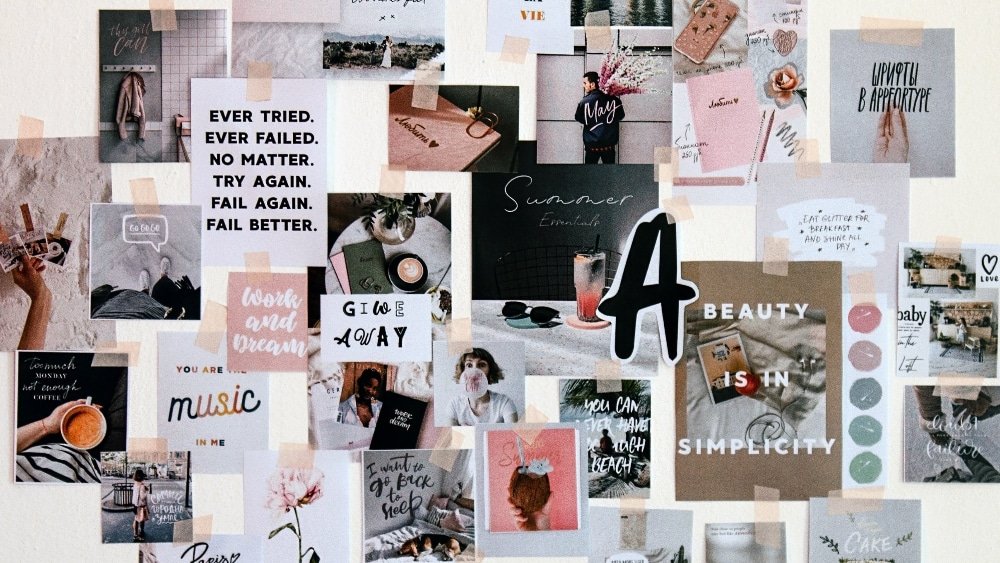
Lecture Notes
Christoph Miller
As 1 part of a partnership, Christoph is always sharing ideas. Collaborating with a ‘third mind’ – the idea of two minds working together – He and his partner are more successful together and come up with ideas that neither one would have on their own. This also opens up an opportunity for learning and different ways of approaching subjects.
Research is a key element to their visualisation process. By gathering resources, ideas and thoughts are generated through creative thinking. These thoughts are then laid out in sketches to enable communication and discussion about the ideas in the simplest of ways. Christoph favours a more digital approach as he struggles to reflect his ideas on paper.
“I guess it’s a very dynamic and complicated, complex process that’s impossible to control or predict or analyse rationally in a way. I think that makes it quite a beautiful thing but very hard to describe exactly, and very hard to recreate.”
With Migrant Journal, the pair created a polished visual language as one of their first steps so that it could be applied across the publication without too many amends. Colour, stroke width, typography was all decided before delving into the nitty-gritty of each issue.
Most designers have a style that influences their work and ideas. Offshore have a strong connection with Swiss design but also have an admiration for Czech designers, modernists and constructivists. Having said that they are always looking for a new angle, “We really aim to always ask something that can be weird or surprising.” With design, its got to stand out – and it’s not necessarily going to do that if its predictable.
Another source of inspiration for Christoph, is other creative fields, such as, “media art, photography, painting, sculpture, writing etc.” It really is about finding what you enjoy and find visually appealing and then applying that to the project at hand.
Finally, Christoph mentions collaboration:
“Collaborations are great you can learn a lot from them but at the same time, understanding as much as possible is key to move forward in as many fields as possible–it can’t hurt for sure.”
Veronica Fuerte
Veronica talks about her ideas can come from a variety of places. Sometimes from the client and sometimes from the project itself. Like Christoph, she sometimes works with pencils on paper and sometimes moves straight to digital. Self-initiated projects often have a free reign when it comes to development as you don’t need to portray company values etc – they are your values.
Hey Studio takes their inspirations from the modernist style of the 1960s and 70s. Veronica takes the key principles set out during that time and applies a modern twist. This reminds me of the saying, “nothing is original”. Influence and inspiration can be charted through every aspect of design, popular culture, music, art, fashion etc the list is endless. If it works and is proven to work, why not refresh it with your own twist?
Vince Frost
Vince comes from a time (yes that makes him sound old) where computers were not commonplace. For that reason, he is used to creating in sketchbooks. He has got used to this process and enjoys it as it allows him to create quickly iterated ideas in a coffee shop, on the bus, wherever. Of course, he still uses technology and sometimes ideas come from playing around in a programme till “he finds something that works”.
Taking inspiration from his locality, Sydney, Vince takes makes sure he, “[is] aware, being open, listening, looking, questioning.” He enjoys immersing himself in client’s briefs, the problems they have and the lives they live. By noticing the unnoticed he picks up on thin others may miss and this creates an energy and desire to create something which hasn’t been seen before.
Sam Bompass
“The first thing to do is actually do a shit ton of research.” Sam resorts to a more traditional sense of research and turns to his extensive library of books for inspiration. He creates a pitch deck with the appropriate tools but he insists, “don’t be afraid to hand draw; I’ve never done any training, I’ve used napkin sketches to design glassware that has had 30,000 copies made of it. It wasn’t a very good sketch to start with but the end result was alright.”
In response to inspiration, Sam says, “I spend a lot of time archiving images that are useful and slotting away ideas I think are going to be crucial in some shape or form.” He believes the best ideas are two words. By diluting an idea to its simplest form, Sam feels he creates ideas with the most impact.
I really like that Sam isn’t afraid to contact people whose work he enjoys, “If I like anyone’s work I try and email them. It’s always possible to get in touch with people…” It’s a simple idea but one I have probably overlooked. Something I hope to rectify in the future.
James Stringer
As a game’s designer, James uses game engines to create art and visuals. He still struggles with creating a narrative and user experience but is something he is working on. For him, the script is of paramount importance. Everything else can be developed from there. However, games such as No Man’s Sky focus more on the aesthetic than the story. I suppose it depends on what type of game you are creating and who for.
James has a clear direction and theme for his video game. It is based on his life and experiences and he wants the game to reflect that. If you are going to create a self-initiated project, why not make it everything you want it to be? You are the client as well as the designer. Use this unique position to say something about who you are as a person and a designer.
Ambrose, G (2014) ‘Design Genius. The Ways and Workings of Creative Thinkers (Links to an external site.)’, London, Bloomsbury.
- Get curious
- Hapcidents (happy accidents)
- Chunking
- Allow mistakes to happen
- Allow the random
- Remembering how to ‘play’
- If stuck – think again
Workshop Challenge
This week you will explore potential visual directions for your self-initiated project.
- Design five different mood boards to clearly demonstrate how you might research, develop and apply your self-initiated project.
- Upload your five mood board visuals to your blog, with accompanying text captions, to clearly outline the points of reference, inspiration, visual direction and design rationale.
- Select one preferred mood board and upload it to the Ideas Wall and include a brief design rationale, to gain peer feedback.
- Select one direction for your self-initiated project (chosen from one of your five mood boards) and announce your intentions on the Ideas Wall.
- Develop five initial rough visuals in response to your self-initiated project brief. Your rough visuals can be a sketch, design mockup or rendering.
- Post your five initial visuals onto the Ideas Wall, to gain peer reflection.
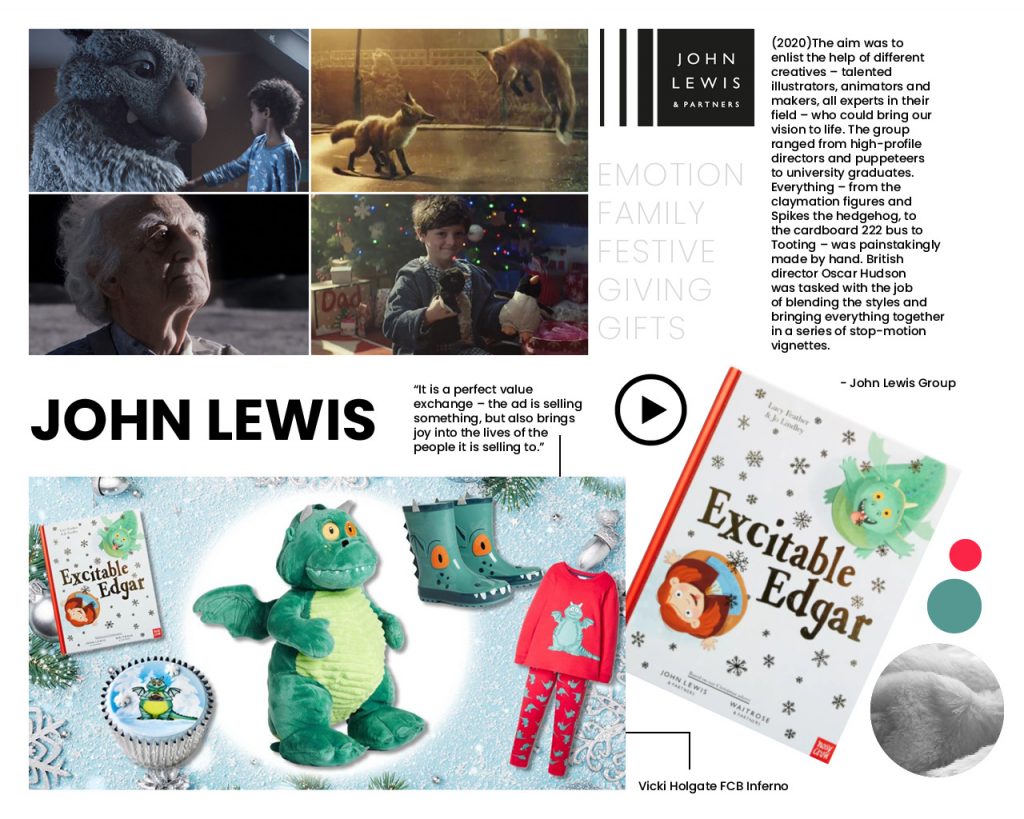
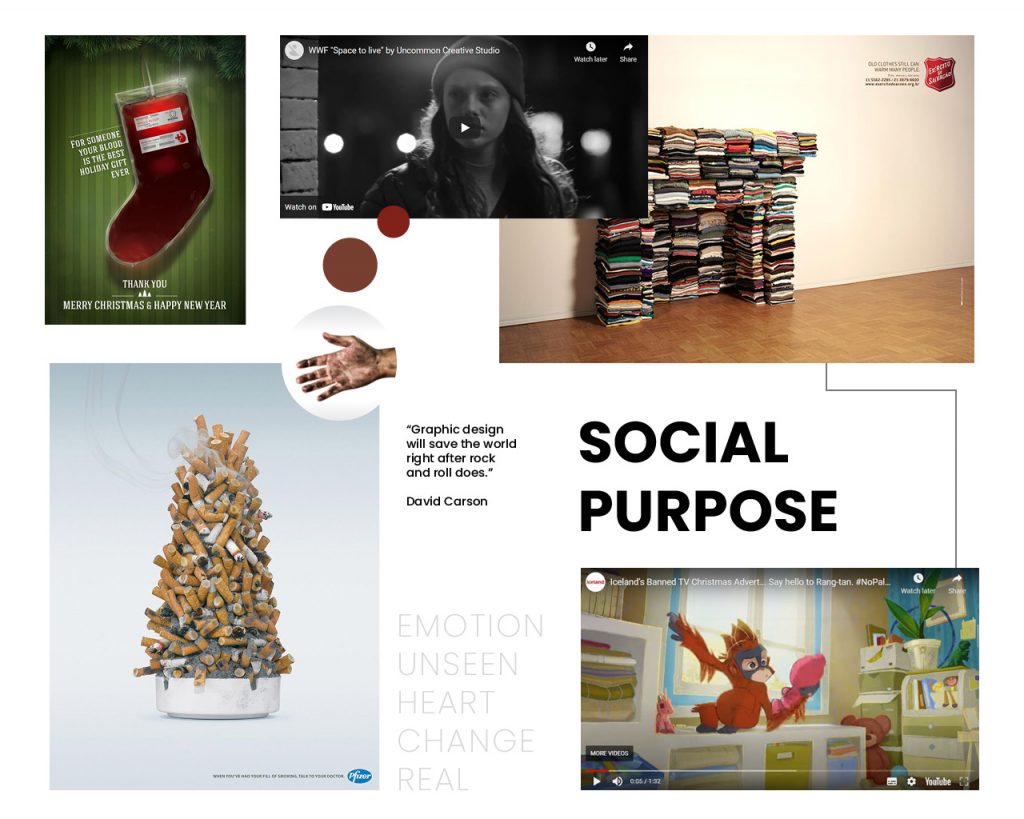
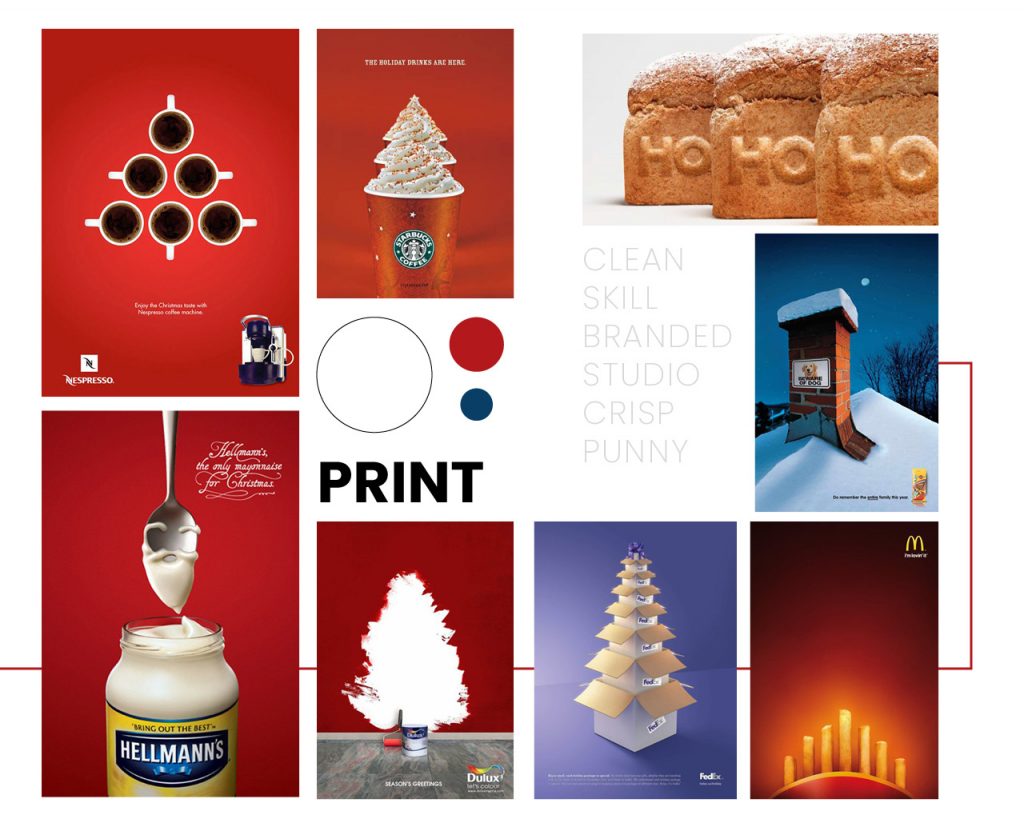
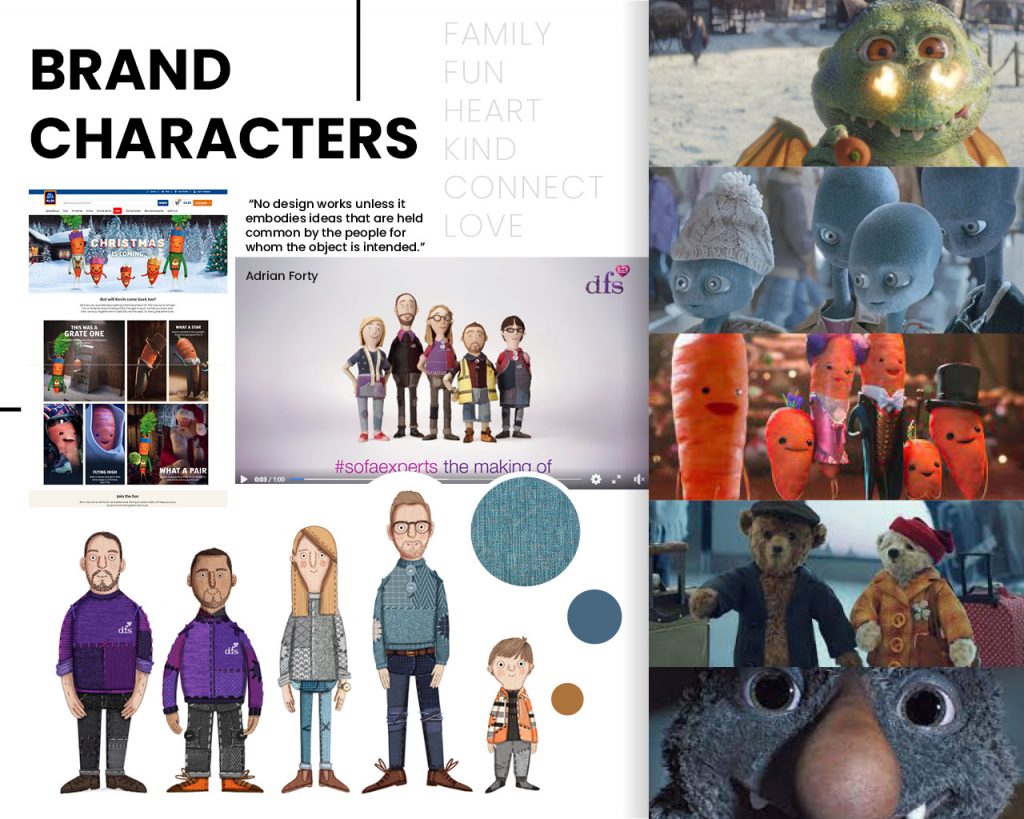
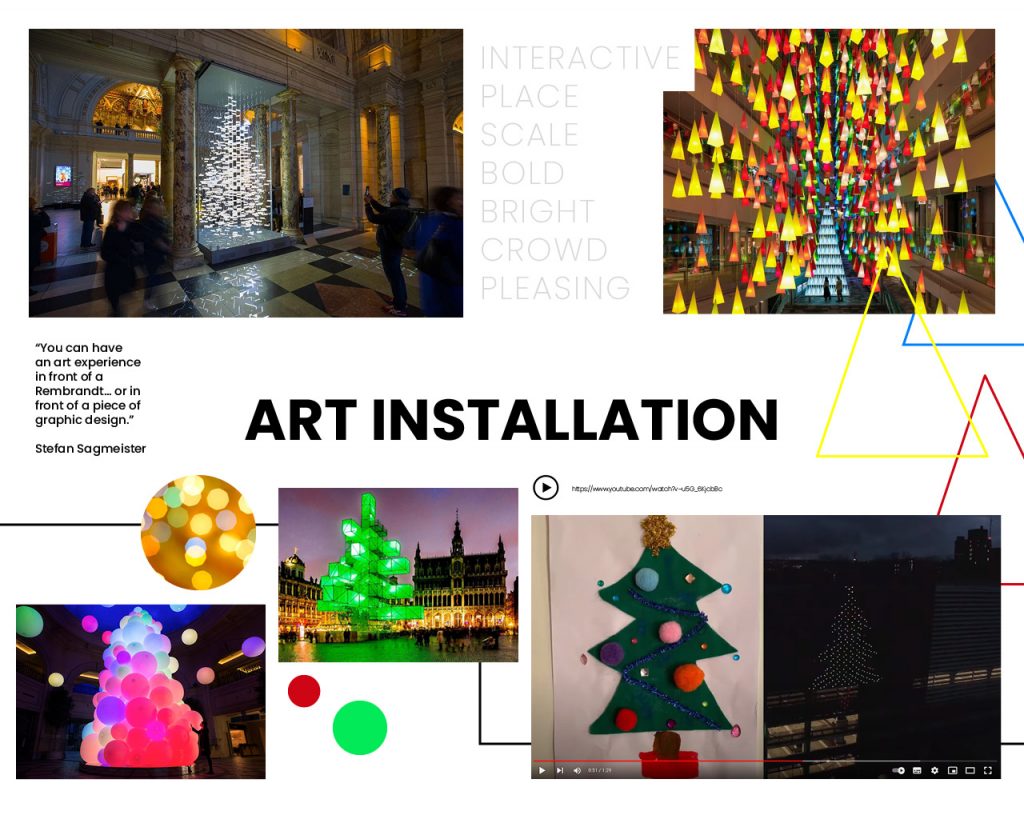
Ideas Wall 1
On the Ideas Wall I wrote:
“Is anyone else finding they like all the potential routes from the mood boards? Like, I could make a video but it could easily be turned into a poster series or a book! Maybe I just want to do it all and should just focus on one. What do you think?”
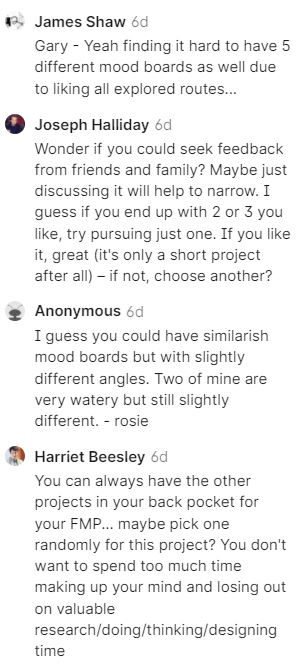
Following on from this feedback I decided to create a new mood board that encompassed all the elements which were of significant interest to me:
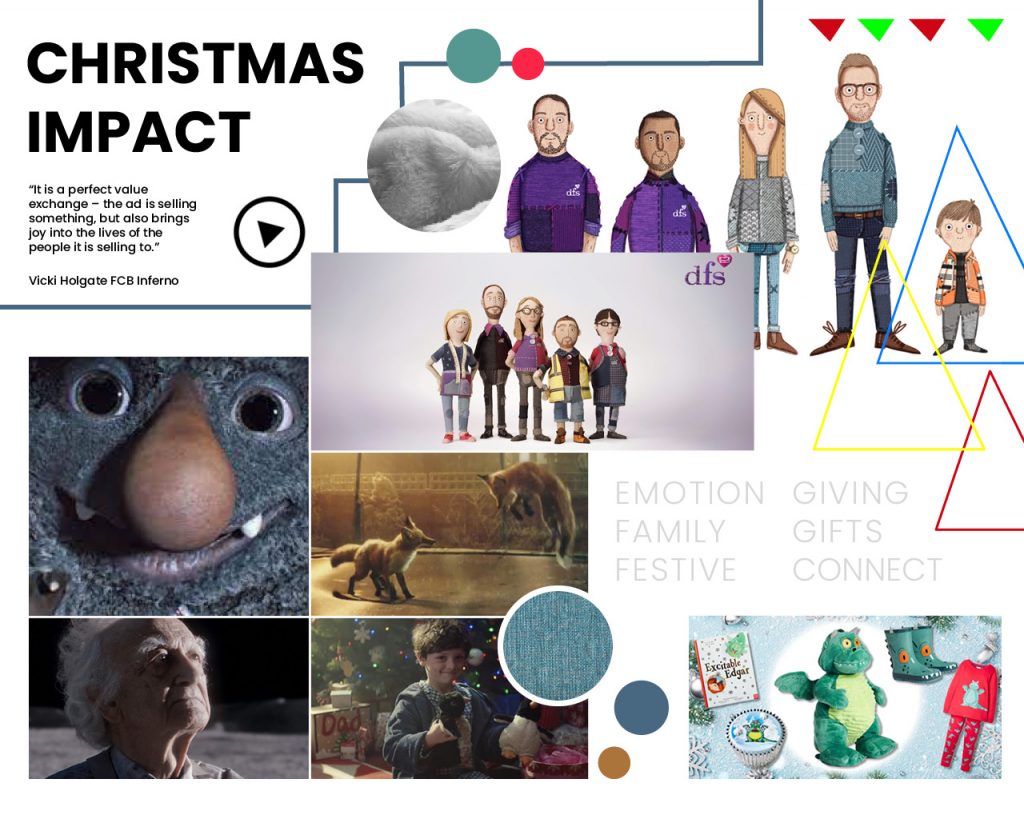
This mood board allowed me to develop two sound ideas that I presented to a work colleague. Together we produced the below slides which would inform this week’s final part of the Workshop Challenge.
The Two Ideas
The Gifts That Keep on Giving
Everyone has that special gift which was given to them by a relative. It doesn’t have to be expensive or even look nice – it can mean the world. Often passed down from generation to generation, these gifts represent a continued legacy. Each time they are viewed, played with or enjoyed the memory of that person lives on.
This first idea is about the giving of a gift that passes on a legacy or memory. For me, this was my Granddad’s race car. I never met the man, but my connection to him feels strong every time I wind the little key on the side. The ideas to the right show how this idea can be extrapolated through different cultures.
The Christmas Spirit
My second idea is similar to the first but is more universal. It makes the Christmas spirit an unseen character which is always with us. As a child, the character would come into existence as we discover Christmas. The character would change size depending on how much Christmas spirit the person has. When interacting with others, buying gifts, decorating etc the character would grow.
Importantly, time spent with family and learning traditions would allow spirits to engage with each other and pass on their own Christmas spirit.
This option is also about family, tradition, memories and passing on a legacy. Initial character ideas to the right.
Collaborating Over the Idea
Which Way to go?
Following this interesting conversation, I went on to produce the following slide which was uploaded to the Ideas Wall.
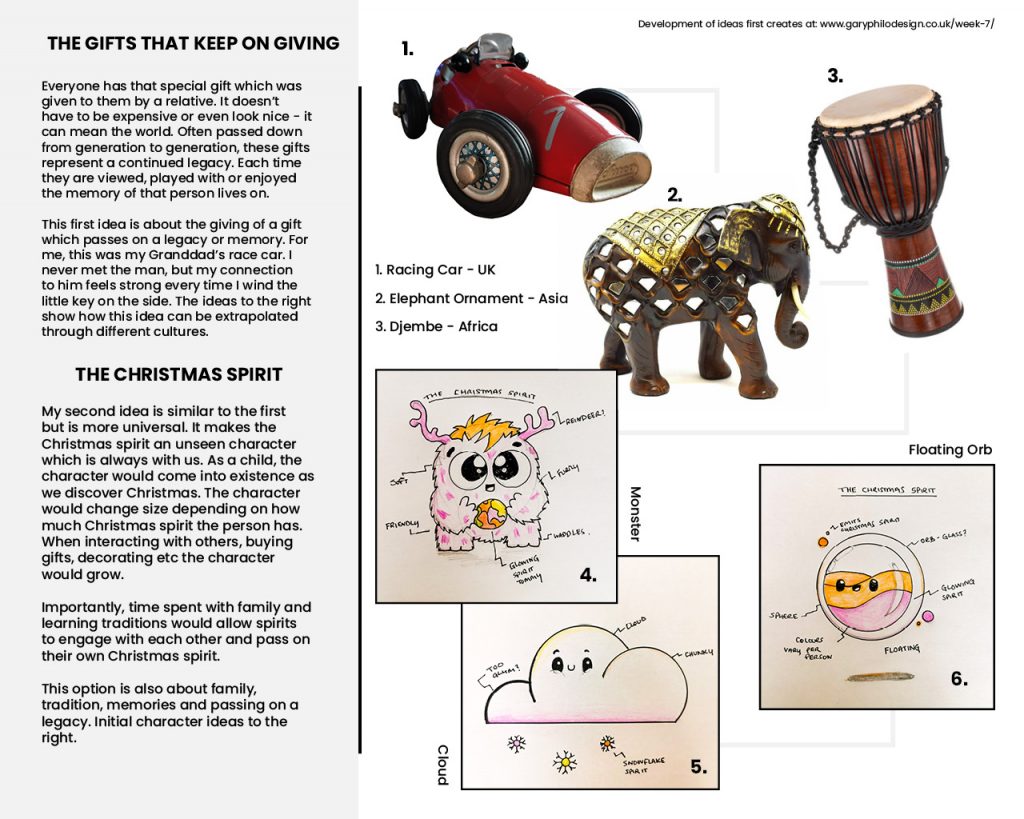
The Ideas Wall
References
Ambrose, G (2014) ‘Design Genius. The Ways and Workings of Creative Thinkers (Links to an external site.)’, London, Bloomsbury.
Adsoftheworld.com. 2008. McDonald’s Print Advert By DDB: Christmas | Ads of the World™. [online] Available at: <https://www.adsoftheworld.com/media/print/mcdonalds_christmas> [Accessed 7 December 2021].
Adsoftheworld.com. 2010. Salvation Army Print Advert By McCann: Fireplace | Ads of the World™. [online] Available at: <https://www.adsoftheworld.com/media/print/salvation_army_fireplace> [Accessed 7 December 2021].
Adsoftheworld.com. 2014. Red Cross Print Advert By Provid: Christmas stocking | Ads of the World™. [online] Available at: <https://www.adsoftheworld.com/media/print/red_cross_christmas_stocking> [Accessed 7 December 2021].
Artofit. n.d. Hellman’s for the holidays. [online] Available at: <https://www.artofit.org/image-gallery/506443920599068459/hellman-s-for-the-holidays/> [Accessed 7 December 2021].
Campaignlive.co.uk. 2020. WWF “Space to live” by Uncommon Creative Studio. [online] Available at: <https://www.campaignlive.co.uk/article/wwf-space-live-uncommon-creative-studio/1698890> [Accessed 7 December 2021].
Deña, C., 2021. Naughty or Nice, You’ll Love Our Christmas Graphics – Unlimited Graphic Design Service. [online] Unlimited Graphic Design Service. Available at: <https://penji.co/christmas-graphics/> [Accessed 7 December 2021].
designboom | architecture & design magazine. n.d. architects + designers unveil holiday installations around the world. [online] Available at: <https://www.designboom.com/design/holiday-installations-festive-trees-architects-12-23-2017/> [Accessed 7 December 2021].
Eames, T., 2021. All the John Lewis Christmas adverts ranked from worst to best. [online] Smooth. Available at: <https://www.smoothradio.com/news/entertainment/john-lewis-christmas-advert-list-videos/> [Accessed 7 December 2021].
Kazi, R., n.d. 15 most viewed Christmas adverts of all time. [online] Digital22.com. Available at: <https://www.digital22.com/insights/most-viewed-christmas-adverts-of-all-time> [Accessed 7 December 2021].
Moskvitch, K., 2010. These are all the problems with Iceland’s banned Christmas advert. [online] WIRED UK. Available at: <https://www.wired.co.uk/article/iceland-advert-banned-christmas> [Accessed 7 December 2021].
We are Distillery. 2020. Christmas is changing: How social purpose is redefining brand conversations in 2020 and beyond. [online] Available at: <https://wearedistillery.medium.com/christmas-is-changing-how-social-purpose-is-redefining-brand-conversations-in-2020-and-beyond-18526d3cc1a1> [Accessed 7 December 2021].
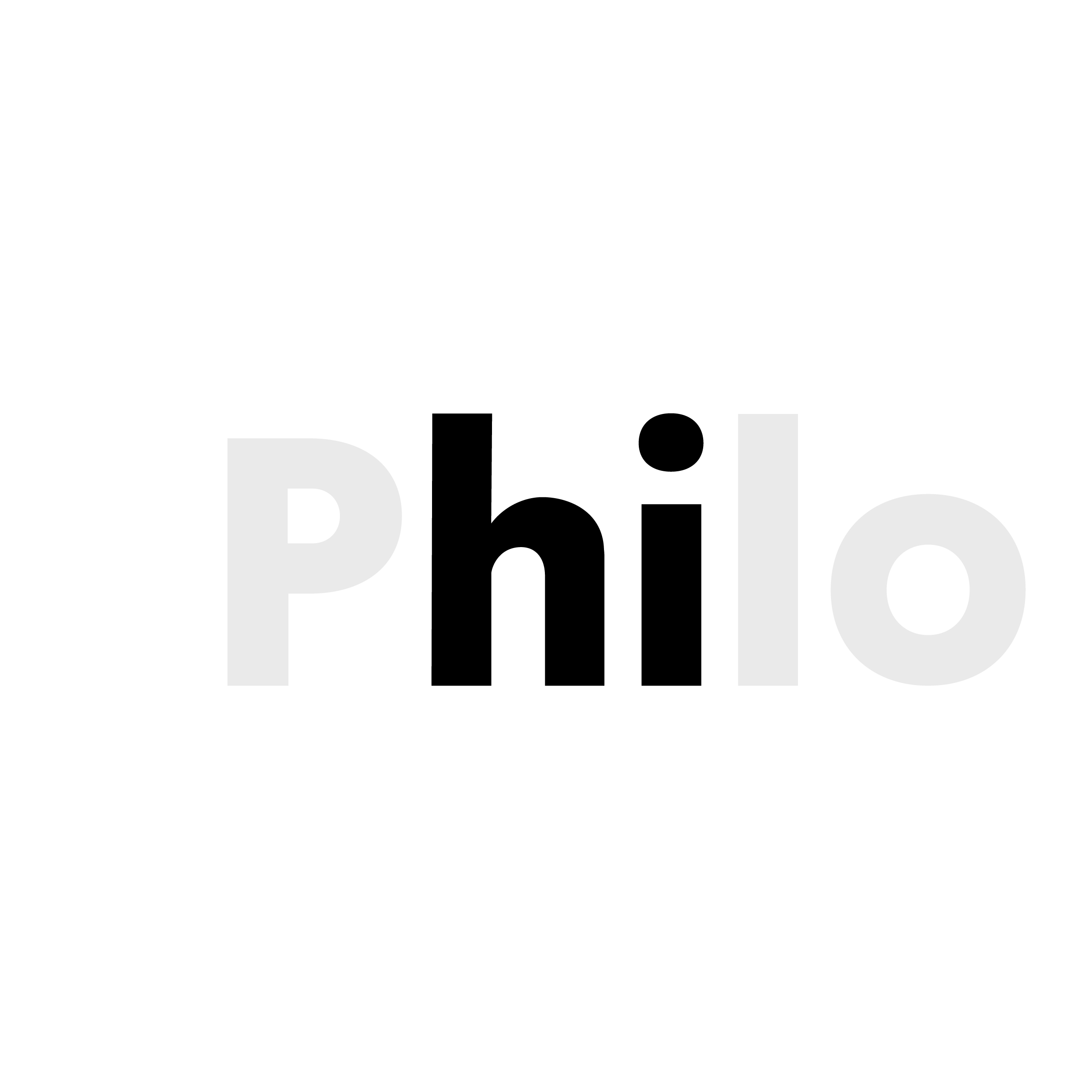
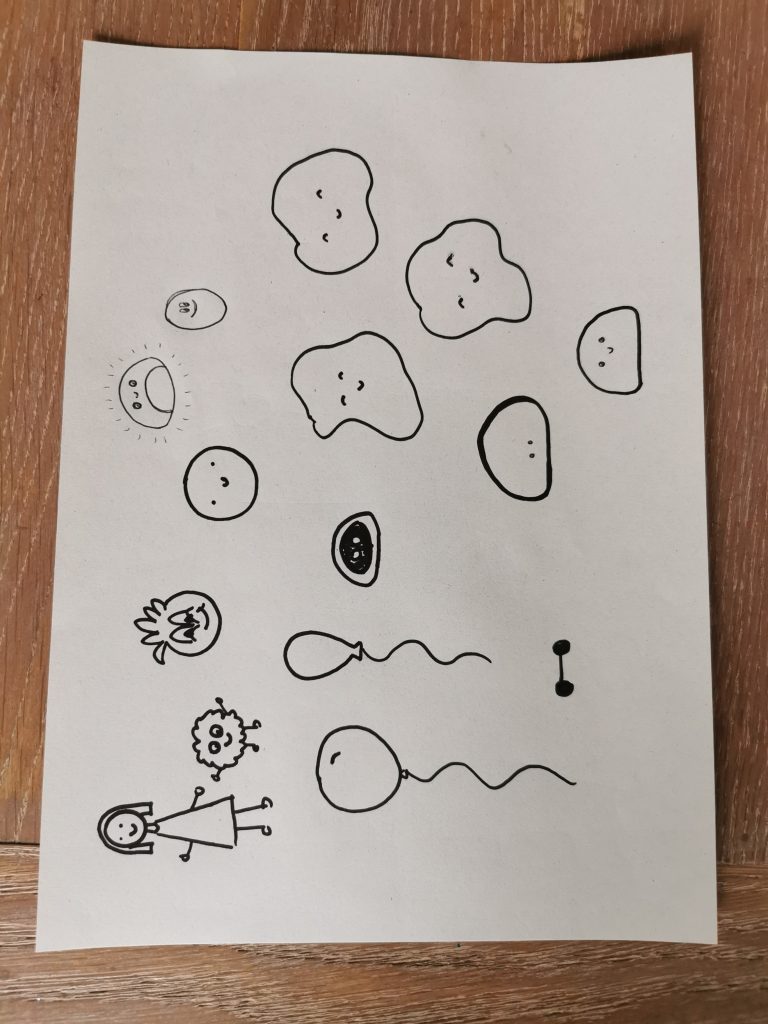

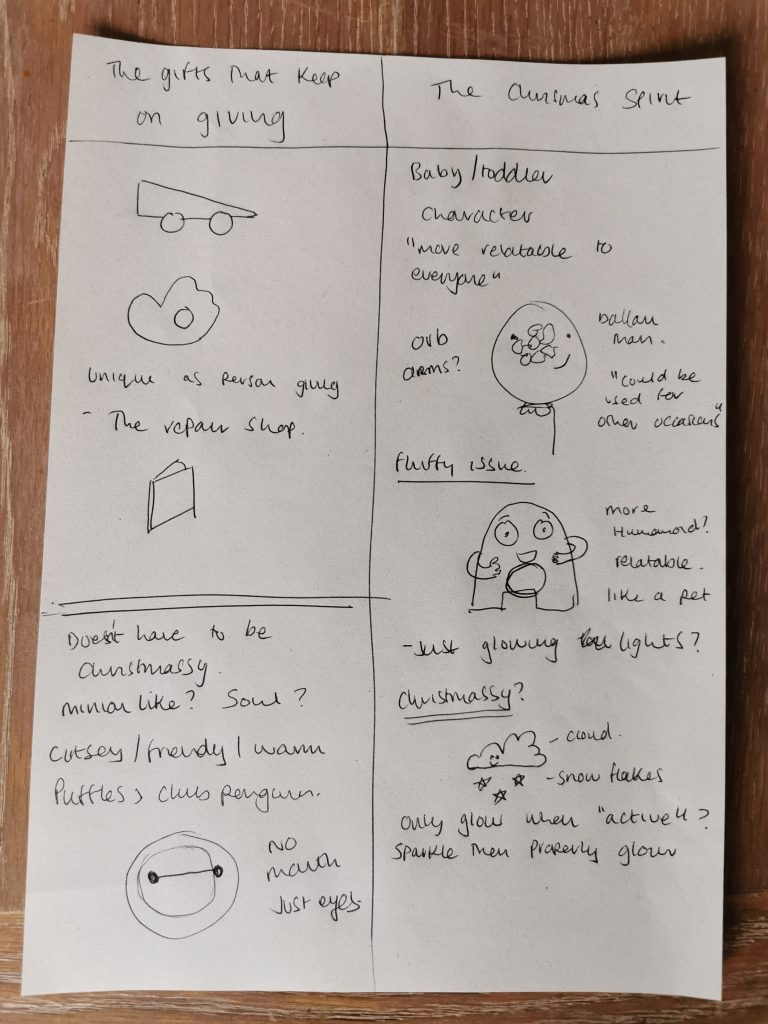
Leave a Reply